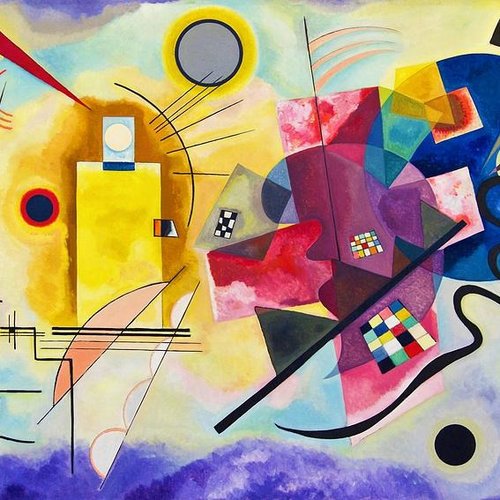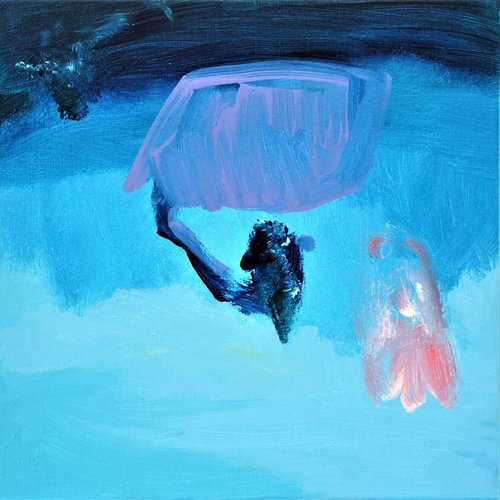How to Understand Paintings: Analysing Them Using the Examples of the Worldwide and Latvian Artists
Agree that it is not always possible to discern the beauty in two strokes or parallel colored stripes on the canvas. Moreover, when the price of such artistic masterpieces is calculated in six-digit figures. Together with Madara Gulbis, an artist of virtual gallery.
1. Marko Rothko, “No.18”, 1951
Paintings of M. Rothko are among the most expensive in the world. But let's be honest – the name of the author is the thing that sells them! It is similar to the fact that we are ready to pay extra for branded foreign cars or expensive watches with a world-famous brand name. To understand and feel the Rothko's works, they must be properly exhibited – the artist himself gave clear instructions about it. Literally everything was taken into account: height above the floor, distance between the paintings, light intensity. In turn, the watcher should be right in front of the painting, only in this case you can feel the color vibrations throughout the body. And it really works that way! By the way, in modern multi-exhibition halls, a huge problem is that the paintings of M. Rothko are not exhibited correctly; therefore, people go away disappointed, never feeling those special vibrations.

An acquaintance with the artist's biography helps to get closer to understanding the Rothko's paintings. It is enough to go to his hometown Daugavpils and see the local landscapes with wide natural spaces. All this Rothko shows in his paintings – colors, tones, one-color fields and plains. When evaluating an artist's pieces of art, it is important to take into account the period of their creation, the prevailing trends and traditions of that time, the social position and worldview of the artist. The breadth of the horizons allows you to more clearly understand the concept of the works, and then they really become exciting!
2. Wassily Kandinsky, Yellow-Red-White, 1925
In the context of this artist, it is important to note that he was born at the right time in the right place. Well, do not forget about the factor of luck, which plays an important role in development. Undoubtedly, W. Kandinsky was a talented, intelligent, well-educated descendant of a noble family. To understand the ideology of his painting, it is worthwhile to get acquainted with his treatises on art, which became the manifesto of the avant-garde artistic program. To feel how the paint works in the painting “Yellow-Red-White”, how it “speaks” to the viewer, Kandinsky advises first to focus on the isolated paint, and only then to observe their interaction. The author reveals a curious relationship between blue and yellow, arguing that they can be connected by both centrifugal and centripetal forces.

3. Madara Gulbis, “Coming”, 2019
The painting “Coming” is painted in the style of abstract painting, conventionally depicting the sea, wind, air flows, space. The conventionality of expression allows the viewer to connect what he or she saw at the painting with his or her feelings, personal experience. A special role in this is given to intuition and the influence of colors on the personality. Large contrasting color areas create space, dynamic of movement. The smooth, dynamic movement of blue and white, slightly covered by the red area in the upper corner of the painting, depicts a strong wind race, which is possible only by the sea. This painting was created for the exhibition of the 2 nd International Biennale “Marina 2019” Painting Competition with the sub-topic “The Storm”, receiving an award from the Jūrmala City Museum.

4. Diana Adamaite, “UL5”, 2018
There is a lot of freedom in modern painting: from the academically correct piece of art to the intuitive and chaotic one. This is what makes abstract painting beautiful - the viewer can create his or her own dialogue, make associations with a piece of art, to be reflected in it. D. Adamaite herself says about her works: “There is no “why”, and consequently, there is no “because”. There is what it is. True experience. There are no artistic narratives, juicy preludes and colorful descriptions. All in all, the elephant doesn't care what people think of him”. Therefore, in the interpretation of Diana Adamaite's paintings, everyone will see what
will respond specifically to him or her.

Author: Elena Safronova




